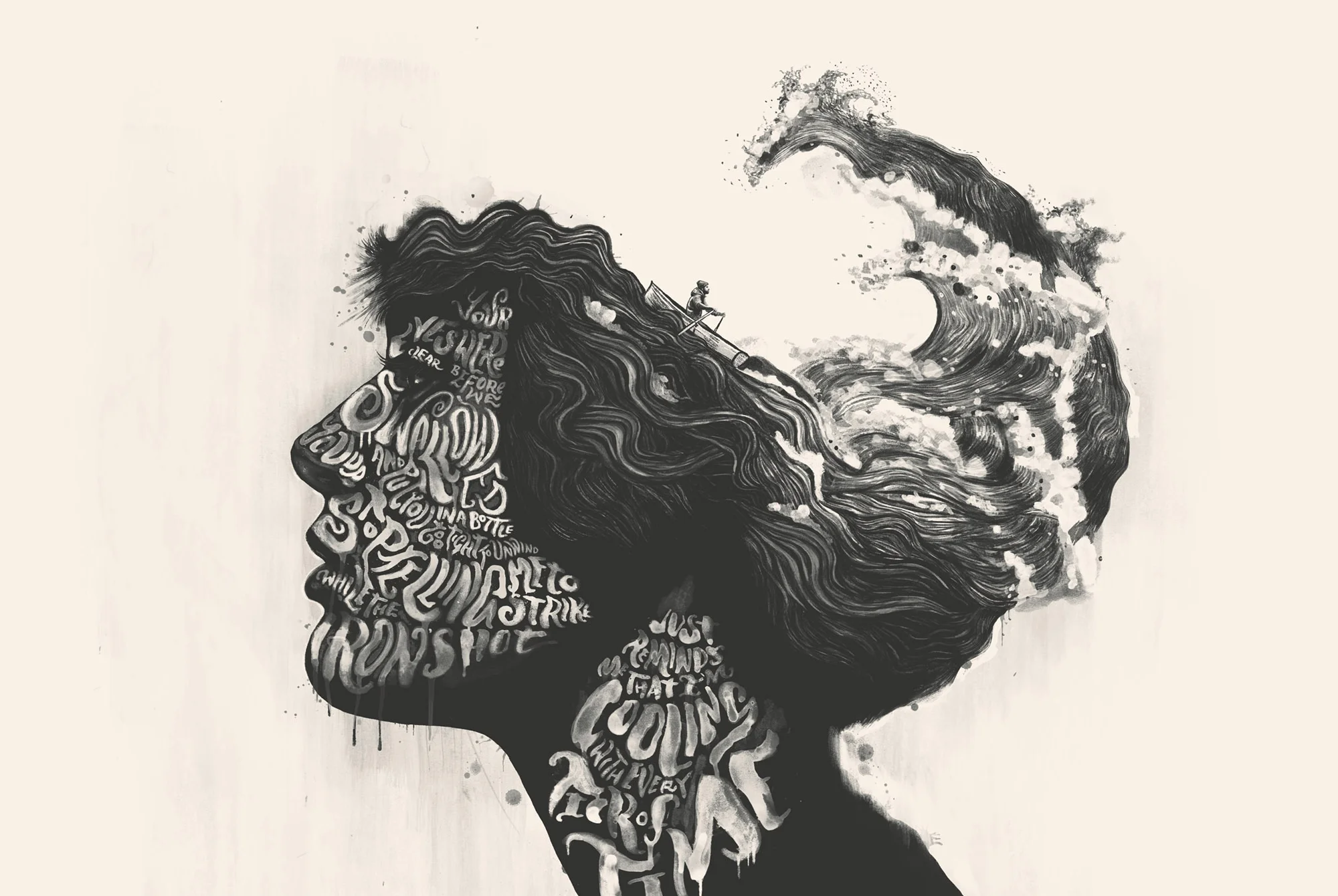
According to Kozak (2021), typography became a key part of modern art in the early 20th century and evolved in post-modern art through the mid-20th to early 21st century. Typography is important in visual communication to convey messages, capture attention, and evoke emotions. That’s why learning typography art is important for creating clear, expressive, and memorable visual identities.
This article will break down its definition, core concepts, and benefits and showcase inspiring examples to help you understand it more deeply.
Key takeaways:
Typography art, also known as type art, comes from combining two concepts: typography and art. Typography refers to the practice of arranging letters and text to enhance readability and visual appeal. While art, as defined by Encyclopaedia Britannica, is a visual object or experience intentionally created as an expression of skill or imagination.
When combined, type art becomes the use of letters, words, and symbols as artistic elements to spark visual interest, communicate meaning, and evoke emotion, reflecting the creativity and skill of the artist.
Effective typography design combines multiple elements to achieve clarity, harmony, and impact. The elements include:
Type art is a powerful tool for communication in both art and design. Here are some of the key benefits of art deco typography.
Also Read: 15 Best Professional Fonts for Your Web Design
After exploring the core concepts and benefits of typography art, it’s time to see how these principles come to life in real-world designs. Here are some examples of type art that may inspire you.

Craig Ward’s Shattered Glass is a striking example of experimental typography, where type printed on glass sheets was shattered and photographed to blur the line between legibility and abstraction. The result transforms words into powerful visual art that conveys emotion and impact beyond design.

Ralph Ueltzhoeffer’s Celebrity Portraits showcase how text can shape identity by using biographical information to form striking portraits of famous figures. His work highlights the narrative power of typography, turning words into visual likenesses that merge storytelling with artistic expression.

Peter Strain’s posters combine bold typography with expressive illustration, often addressing cultural and political themes. His work demonstrates how text can become both a visual anchor and a storytelling tool.

Fred Eerdekens creates sculptural installations where words appear through the interplay of light and shadow, transforming simple materials into poetic messages. His work shows the connection between visual cues and the linguistic meaning behind them.
Also Read: 13 Best Canva Font Pairings to Enhance Your Designs

Paula Scher’s Maps series is a prime example of typography art, using letters and words to create detailed, large-scale maps of cities and countries. In her work, typography serves both as information and visual design, turning ordinary maps into bold, dynamic, and artistic compositions.

Lex Wilson’s 3D Illusions series transforms flat typography into three-dimensional, mind-bending forms that appear to float or twist in space. His work illustrates how perspective, shading, and creative layout can turn letters into visually striking illusions that merge design and optical art.

Too Much Night, Again by Pae White uses dynamic patterns to create immersive, large-scale installations. Her work arranges colored thread by stringing it between different points, and the result is often a geometric pattern.
Also Read: 10 Best Fonts for Books You’ll Ever Need & How to Choose

Stefan Sagmeister’s 250,000 Cents is a notable example of typography art, where he used 250,000 pennies to spell out words and create a striking visual message. The project transforms everyday objects into expressive types.

Art Nouveau is characterized by flowing, organic lines and decorative floral motifs integrated with letterforms. This style transforms text into elegant, artistic compositions that are both visually captivating and expressive.

Alexis Persani’s 3D Digital Letters is a contemporary example of typography art, using three-dimensional digital techniques to transform letters into dynamic, visually striking forms. His work blends depth, perspective, and color to turn simple text into immersive and engaging visual experiences.
Also Read: Top 17 Sans Serif Fonts of the Years – Modern and Professional Designs
After exploring a variety of typography art examples from renowned artists, you now have plenty of inspiration to develop your own designs. Thoughtfully combining elements like fonts, layouts, colors, and creative expression can help you craft compelling visuals.
To make your design compelling, Lettermine Studio offers a wide collection of high-quality typography fonts starting at just $18, with unlimited use for personal projects and social media.
Moreover, with secure, next-level online payment protection and a one-click download feature, accessing your fonts is seamless. Focus on creating stunning, professional designs, and elevate your projects by exploring Lettermine Studio!